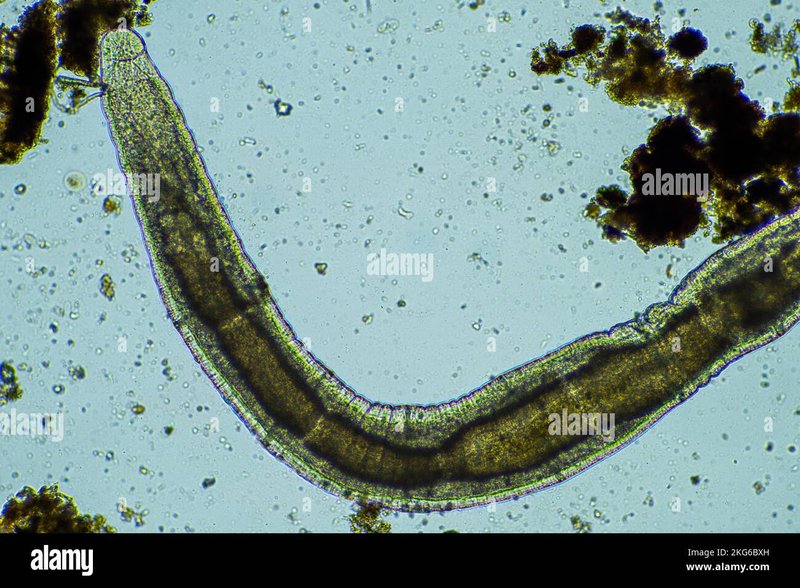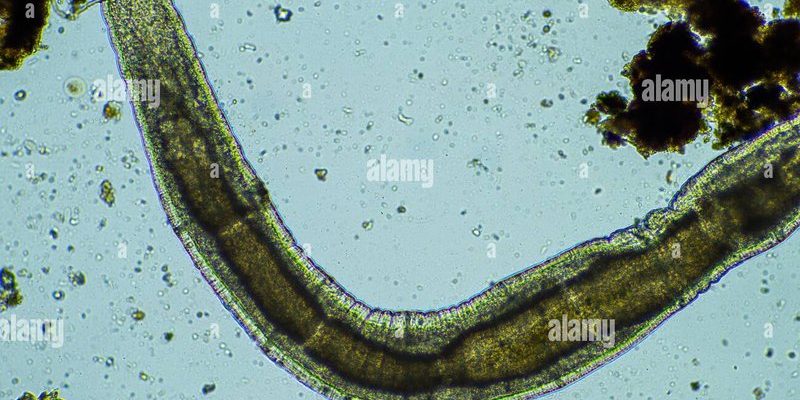
Imagine a bustling city. Each worker has their part to play, ensuring that traffic flows smoothly, buildings are maintained, and residents are cared for. In the same way, microworms contribute to their ecosystems. They break down organic matter, provide food for other creatures, and help maintain soil health or water quality. So, whether you’re an aquarium enthusiast or a gardener, understanding the role of microworms can help you appreciate the intricate web of life around you.
If you’re curious about these little guys and their impact on your garden or aquatic setup, let’s dive in!
What Are Microworms?
Microworms are tiny, usually measuring around 1 millimeter in length. They belong to the family of nematodes, which are roundworms. These worms are often found in soil, decaying plant matter, and aquatic environments. You might spot them wriggling around in compost piles or even swimming in your fish tank. They play an essential role in breaking down organic materials, making nutrients available to plants and other organisms.
These worms thrive in warm, moist environments and can reproduce rapidly. One female can lay hundreds of eggs, leading to a quick population boom under the right conditions. As such, they are often used in fish breeding and aquaculture as a nutritious food source for baby fish and other aquatic creatures. You might be wondering how they are different from other types of worms. Well, microworms are generally smaller and more versatile, able to adapt to various environments.
The Role of Microworms in Soil Ecosystems
In soil ecosystems, microworms contribute significantly to nutrient cycling. They help decompose organic matter, which is vital for maintaining healthy soil structure. When you see worms breaking down leaves or other plant materials, they’re doing more than just making things look tidy. They are creating a rich environment where plants can thrive.
Let’s break it down a bit further. As microworms consume decaying materials, they excrete waste that is rich in nutrients. This waste, also known as worm castings, is like nature’s fertilizer. When it gets mixed into the soil, it improves soil fertility and structure, making it easier for roots to penetrate and access water and nutrients.
Moreover, microworms serve as food for larger soil-dwelling organisms like beetles and centipedes. This helps maintain a balanced ecosystem where different species can thrive together. It’s fascinating to see how such small creatures contribute to the health of the ground beneath our feet!
The Role of Microworms in Aquatic Ecosystems
Just as in soil, microworms are equally important in aquatic ecosystems. They are a crucial food source for various fish and invertebrates. In fish tanks, particularly where baby fish or fry are present, microworms provide a highly nutritious meal that helps them grow strong and healthy.
When microworms flourish in water, they also aid in recycling nutrients. As they break down organic materials like uneaten fish food or decaying plants, they help keep the water clean and safe for other aquatic life. Cleaner water means healthier fish and a more robust ecosystem overall.
It’s interesting to note that microworms can survive in different water conditions, which makes them adaptable. Whether it’s a tank that’s got some algae or one that’s crystal clear, these little worms adjust to their environments, ensuring they play their part effectively.
How to Cultivate Microworms
If you want to benefit from microworms, either for gardening or as a fish food source, cultivating them is quite straightforward. You’ll need a few basic ingredients. Here’s a simple step-by-step guide to get started:
- Gather your materials: You’ll need a container (like a shallow dish or jar), oatmeal or any other grain, and some water.
- Prepare the substrate: Mix equal parts of oatmeal and water to create a pasty consistency. This will be the food source for the microworms.
- Add a starter culture: If you can, snag a small amount of microworm culture from a friend or buy one online. Add it to your mixture.
- Maintain conditions: Keep the container in a warm, dark place. You’ll see tiny worms appear in a few days, and they’ll multiply quickly!
This simple setup allows you to have a continuous supply of microworms. Just remember to harvest carefully to avoid disturbing their habitat too much.
Microworms vs. Other Worms: What’s the Difference?
You might be thinking, “Why should I care about microworms instead of other types of worms?” That’s a fair question! While all worms play roles in ecosystems, microworms have unique benefits.
For instance, when we compare them with larger earthworms, microworms are better suited for breaking down smaller organic particles. They can thrive in more diverse environments, while earthworms typically prefer soil. Also, if you’re into aquaculture, microworms are often more practical than other worms due to their size and nutritional profile.
In short, each type of worm has its niche. Microworms might be tiny, but they have a big impact, particularly in aquatic settings. Their adaptability and rapid reproduction make them a superb choice for fish keepers and even gardeners who want to enrich their soil.
Challenges and Considerations in Using Microworms
While microworms are beneficial, there are some challenges to consider. For one, they need specific conditions to thrive. If your environment is too dry or cold, they can die off quickly. It’s essential to monitor moisture levels and temperature to ensure a robust microworm culture.
Another consideration is potential contamination. Microworms can attract unwanted pests if not managed properly. Keeping your cultivation area clean and checking for any signs of mold or other issues can help you maintain a healthy microworm population.
Lastly, their rapid reproduction means you might end up with more microworms than you need. If that happens, you can either share with fellow fish keepers or use them to enrich the soil in your garden. It’s a win-win situation!
Microworms might not be the most glamorous creatures in the ecosystem, but their contributions are invaluable. They break down organic matter, enrich soil, and serve as a vital food source in aquatic environments. Understanding their role helps us appreciate the intricate web of life that connects all living things, from the tiniest microworm to the largest trees and fish.
Whether you’re a gardener looking to improve your soil health or an aquarium hobbyist wanting to feed your baby fish, microworms can make a significant difference. So next time you’re tending to your garden or aquarium, remember the tiny heroes working behind the scenes, ensuring everything runs smoothly in their respective ecosystems!

